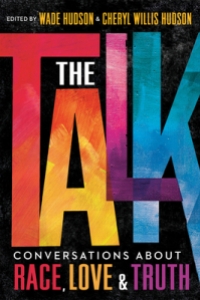Lynn: There is nothing I like better than an uplifting underdog story and this underhorse story was a pleasure to read–especially as it is a TRUE story! In this time of soaring egos, disdain for others, and scorn for real integrity, this is a lovely tale of the quiet, humble, and hard-working immigrant whose act of kindness rewarded him and his family–AND the horse he rescued. The Eighty-Dollar Champion: The True Story of a Horse, a Man, and an Unstoppable Dream (Random/Delacorte, 2020) is a story that will lift readers’ hearts.
Harry De Leyer and his wife Johanna came to the U.S. from Holland following WWII with almost nothing in their pockets. Harry’s hard work and ability brought him to a job as a riding teacher at an exclusive girls school on Long Island. Needing a gentle lesson horse, Harry set out one winter day to attend a horse sale but arrived too late, just as the “kill buyer” was loading the rejects. One of the horses, a big undernourished grey, caught Harry’s eye and on instinct, he paid all he had, $80.00 for the horse. It was 1956 and Harry had no idea the bargain he had just made.
Snowman, under Harry’s care, prospered and became just the lesson horse he needed–gentle, patient, and loving. The girls at the school loved him as did Harry and his whole family. But no one suspected the amazing ability Snowman’s gentle nature hid. That spring, reluctantly, Harry sold Snowman to a neighbor needing a gentle horse for his young son. Snowman had other ideas. Again and again, he jumped increasingly high and challenging fences to return home to Harry. Snowman knew where he belonged and it was with the De Leyers! It was then that Harry began to discover just how skilled a jumper Snowman was and to train and enter him in horse jumping shows around the state.
Snowman had been a plow horse and even in his coddled days with Harry, he never looked like the highly bred, highly strung horses at the top of the equestrian meets. In the beginning, most people laughed at Harry and Snowman as they began competition. Steady and unflappable, Snowman began to win every competition, cheerfully jumping easily over every obstacle before him. Eventually, he went on to win two Triple Crowns in a row–something that had never been done before.
Harry and Snowman became celebrities and throughout it all remained humble and little changed by fame. Snowman continued to be a lesson horse and Harry to resist all offers to buy him.
This is a very successful abridgment of Letts’ adult book and it was a perfect joy to read. You don’t have to be a horseman or to have had experience with the sport of jumping. Letts gives us a wonderful peek at that world, with just enough of the experience and tension of the various competitions to raise suspense and heighten the pace. But she also makes readers feel as if they know Harry and Snowman and they become vivid and heartfelt characters we deeply care for. And in this dark time, it is a welcome reminder that humility and hard work have rewards, that kindness makes a difference, and that the underestimated can achieve it all. I teared up several times, especially with the book’s conclusion.
“Never give up, even when the obstacles seem sky-high. There is something extraordinary in all of us.”
Back matter includes an interview with Harry De Leyer and a conversation with the author as well as extensive source notes. Give this to kids wanting an uplifting story, engaging nonfiction, or a very unusual horse story.




 Lynn: Decades before Rosa Park refused to sit in the back of a bus, another brave determined woman demanded her rights on a streetcar in New York. Beth Anderson tells her inspiring story in
Lynn: Decades before Rosa Park refused to sit in the back of a bus, another brave determined woman demanded her rights on a streetcar in New York. Beth Anderson tells her inspiring story in  Cindy: Another African American girl who took an important seat is featured in
Cindy: Another African American girl who took an important seat is featured in 




 Cindy: Can we talk? A few years ago when one of my white 8th-grade students read
Cindy: Can we talk? A few years ago when one of my white 8th-grade students read 




 Lynn: Books for really young readers on careers are not easy to do well but a wildlife photographer/author that I especially admire, Suzy Eszterhas, has given us just that in
Lynn: Books for really young readers on careers are not easy to do well but a wildlife photographer/author that I especially admire, Suzy Eszterhas, has given us just that in